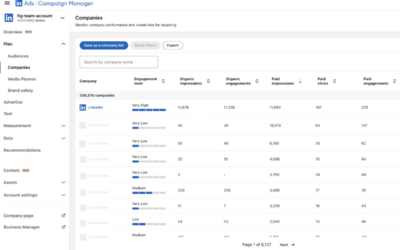Paid social advertising offers a unique opportunity to engage with your target audience where they spend their time online. But the key to success lies in understanding how to effectively use these platforms to cut through the noise and drive meaningful interactions.
This guide explores actionable strategies to help you craft paid social campaigns that resonate with B2B decision-makers.
Step 1: Identify Your Target Audience
Before you launch any campaign, it’s essential to know exactly who you’re targeting. In B2B, decision-makers typically include roles such as CEOs, executives, department heads, IT managers, and procurement officers. Focus on specific demographics like job titles, industries, company sizes, and geographic locations. By narrowing down your audience, you can ensure your ads are seen by those most likely to engage with them.
It’s also crucial to leverage platform-specific targeting options. Social platforms such as LinkedIn and Facebook offer advanced tools to help you zero in on your audience. For instance, LinkedIn allows you to target users based on job title, industry, company size, and even specific skills. On Facebook, custom audiences enable targeting based on professional behaviors and interests.
Step 2: Choose the Right Social Platforms
Selecting the appropriate platform for your campaign can make or break its success. LinkedIn is often the go-to choice for B2B advertising due to its professional network and targeting capabilities. With LinkedIn Ads, you can reach users based on their job titles, seniority levels, industries, and even group memberships. This makes it an ideal platform for reaching high-level decision-makers.
Facebook and Instagram, while traditionally B2C-focused, offer vast audience pools and sophisticated targeting options that can also benefit B2B campaigns. These platforms allow you to create custom and lookalike audiences to target professionals effectively.
Step 3: Craft Compelling Ad Content
Creating content that resonates with B2B decision-makers requires aligning your messaging with their buyer’s journey. At the awareness stage, focus on promoting blog posts, infographics, or industry insights that educate and inform. As they move into the consideration stage, offer more in-depth resources like case studies, eBooks, or webinars. When they reach the decision stage, emphasize bottom-of-funnel content such as free trials, consultations, or product demos.
Your messaging should be clear and persuasive, directly addressing the pain points of your audience while highlighting measurable benefits such as ROI or time savings. Effective calls-to-action (CTAs) are crucial for guiding users toward the next step. For example, CTAs like “Download the Guide” or “Schedule a Demo” provide clear instructions and encourage engagement.
Visual elements also play a significant role in capturing attention. High-quality imagery, professional videos, or animations can enhance your ads and ensure they align with your brand’s tone and messaging.
Step 4: Leverage Retargeting Campaigns
Retargeting is a powerful tactic for reconnecting with decision-makers who have already interacted with your brand. By targeting website visitors, you can show ads to users who viewed specific pages, such as product details or pricing. Additionally, you can engage with individuals who clicked on previous ads or interacted with your content on social media.
Using email lists is another effective strategy. Many platforms, including LinkedIn and Facebook, allow you to upload your CRM data to create custom audiences. This enables you to tailor your campaigns to people already familiar with your brand, increasing the likelihood of conversion.
Step 5: Optimize Your Campaigns
To ensure your campaigns deliver results, monitoring key performance metrics is essential. Metrics like click-through rates (CTR), cost-per-click (CPC), conversion rates, and engagement levels provide valuable insights into your campaign’s performance. Regularly analyzing these metrics helps you identify what works and what needs adjustment.
A/B testing is another critical component of optimization. Experiment with different ad creatives, headlines, CTAs, and targeting criteria to determine the most effective combinations. Use the data gathered from these tests to refine your audience segments and improve future campaigns.
Step 6: Align Paid Social with Your Overall Strategy
Paid social advertising should complement your broader B2B marketing efforts. Integrate your campaigns with other initiatives such as content marketing, email campaigns, and account-based marketing (ABM). For example, you can promote high-value resources through paid social ads to nurture leads and then follow up with targeted email campaigns. Similarly, focusing ads on specific companies or accounts can amplify your ABM strategy.
Final Thoughts
Paid social advertising is a powerful tool for connecting with B2B decision-makers. By leveraging precise targeting, compelling content, and continuous optimization, you can build relationships, drive leads, and achieve measurable results. Start applying these strategies today to make your next campaign a success.

